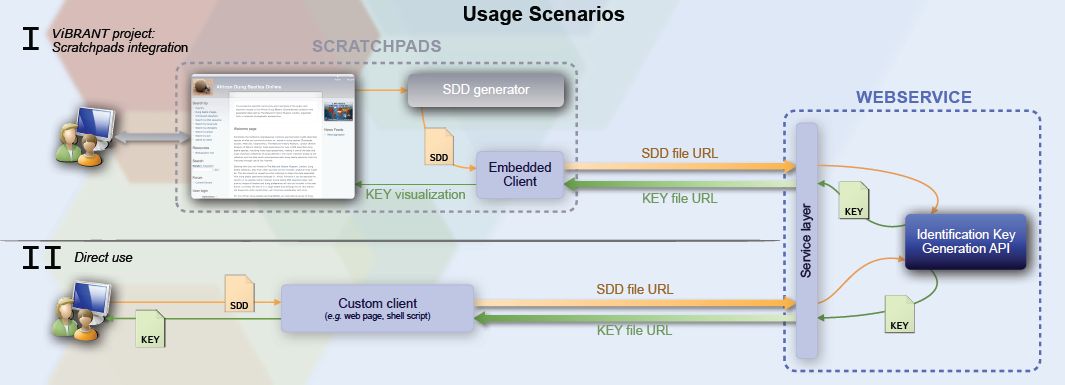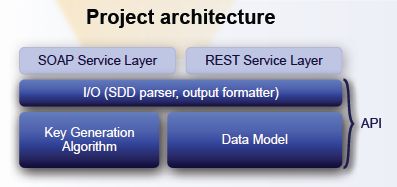Identification Tools
Régine Vignes-Lebbe, Thomas Burguiere, Florian Causse & Visotheary Rivière-Ung (UPMC)
Identification keys are widely used by scientists to identify taxa. This new IdentificationKey WebService provides a service to create single-access (dichotomous) keys on demand from a descriptive data stored as SDD format.
There are two main usage scenarios of this WebService:
-
A client component is integrated within the Scratchpads biodiversity networking tool, making the WebService available to Scratchpads user transparently.
-
The WebService can be called directly from a WebService client. We provide barebones clients written in Java and PHP, for both communication protocols supported by our WebService (SOAP and REST).

The key generating service will operate through the OBOE (Oxford Batch Operation Engine) service (described under "Phylogeny Tools") integrated into Scratchpads 2, to be released in Spring 2012 as a sandbox for people to test the services.
Key generation algorithm
The method of creating the graph (the identification key) is a heuristic algorithm that selects, step by step, the "best" character to form a node of the graph according to the criteria to optimise, and then create branches from this node and continues the process in each branch until a stop criterion is reached.
Several parameter are available, in order to generate alternative keys in different formats. Details are in the online userguide documentation.
WebService installationThe WebService is coded in the Java programming language, using the The identification keys generated by the WebService are stored inside |
 |







